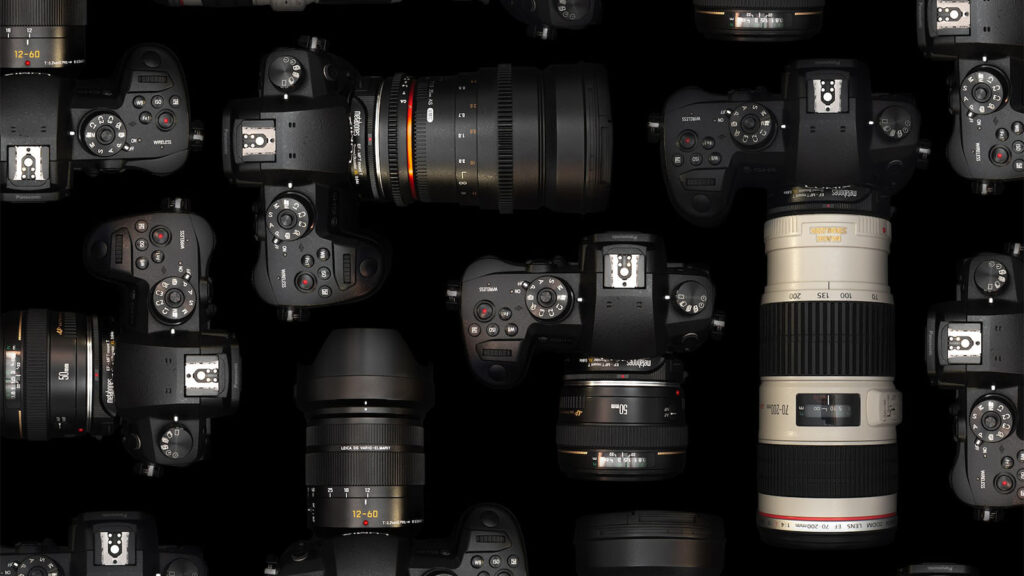Architectural Filmmaking – Part 2 – Creating a Strong Foundation and Not Biting Off More Than You Can Chew
Introduction
In my previous article on beginning your journey into architectural filmmaking, we weighed the pros and cons of delving into offering video services to your clients. If you’ve decided that pursuing motion work is indeed the direction that you want to follow, let’s now identify and explore the initial steps you need to take in order to execute your first architectural video.
What to Shoot?
First, you’ll need to find an appropriate subject for your inaugural motion project. Since I assume most people reading this article will be just starting their filmmaking journey, I would suggest one of the following strategies:
One option is to find a publicly accessible building or space nearby where you can test out and hone your video skills. This is great since you can choose a subject that interests you and hopefully aligns with the type of project you would hope to film in the future. Additionally, you can work whenever you have some free time and at your own pace, so there is no time or client pressure. The downside is that you probably won’t have any control over the status of the building/space in terms of unwanted distractions/obstacles, controlling the lighting, etc. So, identifying a subject that is ‘clean’ enough for you to shoot is important. Remember that with video, you will have a lot less flexibility to remove distractions in post production.
The second would be to piggyback off one of your commissioned photography shoots and request more time on-site to capture some video. Of course, you need to ensure that your client gets what they are paying you for in terms of still imagery, but if you can negotiate some more time on site, this is a good way to hone your skills and ideally create a motion piece that you can show future potential clients in your efforts to secure your first video commission. In exchange for more time on site, you may opt to offer up the video piece to your client either for free or for whatever fee you think it’s worth. There are a lot of ways to negotiate this and it’s up to you to decide what is comfortable for you and your client. If this client is not currently commissioning any video work, this could be a good opportunity to demonstrate (with little to no risk for them) how the medium offers up new ways to showcase their projects.
Creating Your Essential Skill List
After selecting what to film, you’ll then need to determine the essential skills necessary to create your first architectural video. I say ‘essential’ because I highly recommend learning only the most necessary and crucial skills at the beginning of your motion journey. There are a lot of new skills and ways of working that you need to begin to learn and develop, so try not to take on more than you can handle. Getting overwhelmed because you were overly ambitious may only serve to discourage you from achieving your goals. You don’t need to know everything about filmmaking or video editing to be able to make a beautiful architectural video. Once comfortable with the basics, you can then gradually begin to add new skills and techniques to your arsenal of filmmaking weapons.
Let’s take a look at how you can go about mapping out and prioritizing the new equipment, skills, and techniques you’ll need to learn for your first video shoot.
The Essentials
- Learn your camera’s video settings (resolution, file format, frame rate, etc,)
- Picture profiles and shooting in log format
- Since unless you are cashed up and willing to drop some serious coin on a camera capable of shooting RAW, the camera you’ll be using won’t have anywhere near the amount of dynamic range that you are used to relying on with still photos. This is where ‘shooting in log’ comes in. If you are not familiar with log footage, it essentially creates flat footage that ‘bakes in’ more detail into the images that make up your video. Basically, it helps retain more detail information in the highlights and shadows. Log footage is not intended to be used without editing afterward. It simply preserves more detail/dynamic range for you to work with during the editing stage.
- If you are shooting a project that you do not anticipate having extreme contrast between the bright and dark areas, I would suggest not using log for your initial video shoot. However, if there will be a large spectrum of dynamic range, you’ll really want to delve into this more as you will most likely be disappointed in your limited ability to adjust exposure in post. Here’s a good overview of what shooting in log means for those of you who are new to the technique.
- Since unless you are cashed up and willing to drop some serious coin on a camera capable of shooting RAW, the camera you’ll be using won’t have anywhere near the amount of dynamic range that you are used to relying on with still photos. This is where ‘shooting in log’ comes in. If you are not familiar with log footage, it essentially creates flat footage that ‘bakes in’ more detail into the images that make up your video. Basically, it helps retain more detail information in the highlights and shadows. Log footage is not intended to be used without editing afterward. It simply preserves more detail/dynamic range for you to work with during the editing stage.
- Audio
- Photographers craft narratives through visual storytelling and most aren’t accustomed to having to appeal to a second sense. However, audio has such an immense impact on your final film, so make sure you give it the time it requires and deserves.
- The first major choice you’ll need to make is whether you want to use environmental sound or a music track (or a combination of both). This decision obviously will have a significant impact on the mood of your film. If you go the music route, the song’s characteristics (tempo, rhythm, etc.) will have a huge influence on the overall speed of your film, the total number of video clips you’ll need, as well as the length of each of those clips. It can sometimes make sense to select the music track before you begin filming so that you have an idea of these parameters before heading on-site to shoot.
- Photographers craft narratives through visual storytelling and most aren’t accustomed to having to appeal to a second sense. However, audio has such an immense impact on your final film, so make sure you give it the time it requires and deserves.
The Non-essentials (save these for later!)
- Camera movement + using stabilizers
- Timelapse
- Slow motion
- Transitions
- Lots and lots of other techniques that you can delve into at a later date
What Gear You Will Need to Execute

So, what gear do you need to execute this initial video venture? Not much. Not much at all really. If you are already an architectural photographer, your current camera almost certainly already has video capabilities that are adequate to capture your first video. At this point, don’t worry about doling out boatloads of cash on new video-centric equipment. Ensuring you enjoy working in this medium and then honing your craft/technique is what you should be focusing on before investing your hard-earned money in expensive new equipment.
I would suggest picking up an ND filter if you’ll be filming in bright conditions so that you can keep your shutter speed in check. Besides that, there really isn’t too much else you need. As we have discussed a few times on this site, adding camera movement to your architectural videos is not always necessary (and oftentimes distracting), and given that you are just getting started, I would suggest introducing camera movement later on in your video journey. Motion stabilizers can be expensive and so I would hold off on this at the moment.
Post-production
Once you’ve captured all your video footage, you now need to combine all your clips together to create the story you want your film to tell. If you’re new to video editing, you will need to choose which video editing software program to use. The most common platforms are Adobe Premiere Pro, DaVinci Resolve, and Final Cut Pro. If you’re interested in learning more about and comparing these three programs, here’s a good overview from YouTuber Michael Tobin.

Whichever software program you decide to use, the same ‘keep it simple, stupid’ logic should apply here. Video editing programs have a massive number of features, the vast majority of which you do not need to know to create your first video. When it comes to learning how to edit video, you can purchase an introduction to video editing tutorial, or simply scour through YouTube for answers to your specific questions. I did a combination of the two, first purchasing FStoppers’ ‘Introduction to Adobe Premiere’ and then searching on YouTube for answers to random questions that would pop up along the way. In many ways, video editing is actually a lot easier and quicker than photo editing. You don’t need to be nearly as precise or rigorous with your edits.
Here are the basics of what to learn within your chosen platform:
- Creating a project
- Creating a timeline sequence with your desired settings
- Importing media/footage
- Adding media/footage to timeline
- Learning the basic tools for editing (there are only a few you need to know – moving/chopping clips, etc.)
- Applying LUTs to your video footage (if you choose to shoot in log profile)
- Color correction
- Color grading (only necessary if you want to give your film a more stylized ‘look’)
- Adding audio and syncing it with your video footage
- Exporting final video
Of course, there are a whole host of other features you could learn, but save those unneeded ones for a later date. I can assure you that learning even the bare minimum will be enough to create a beautiful short film that you can be proud of.
With these strategies of simplicity in mind, in my next article I will show you how this preparation enabled me to create my first-ever architectural video. Stay tuned!
